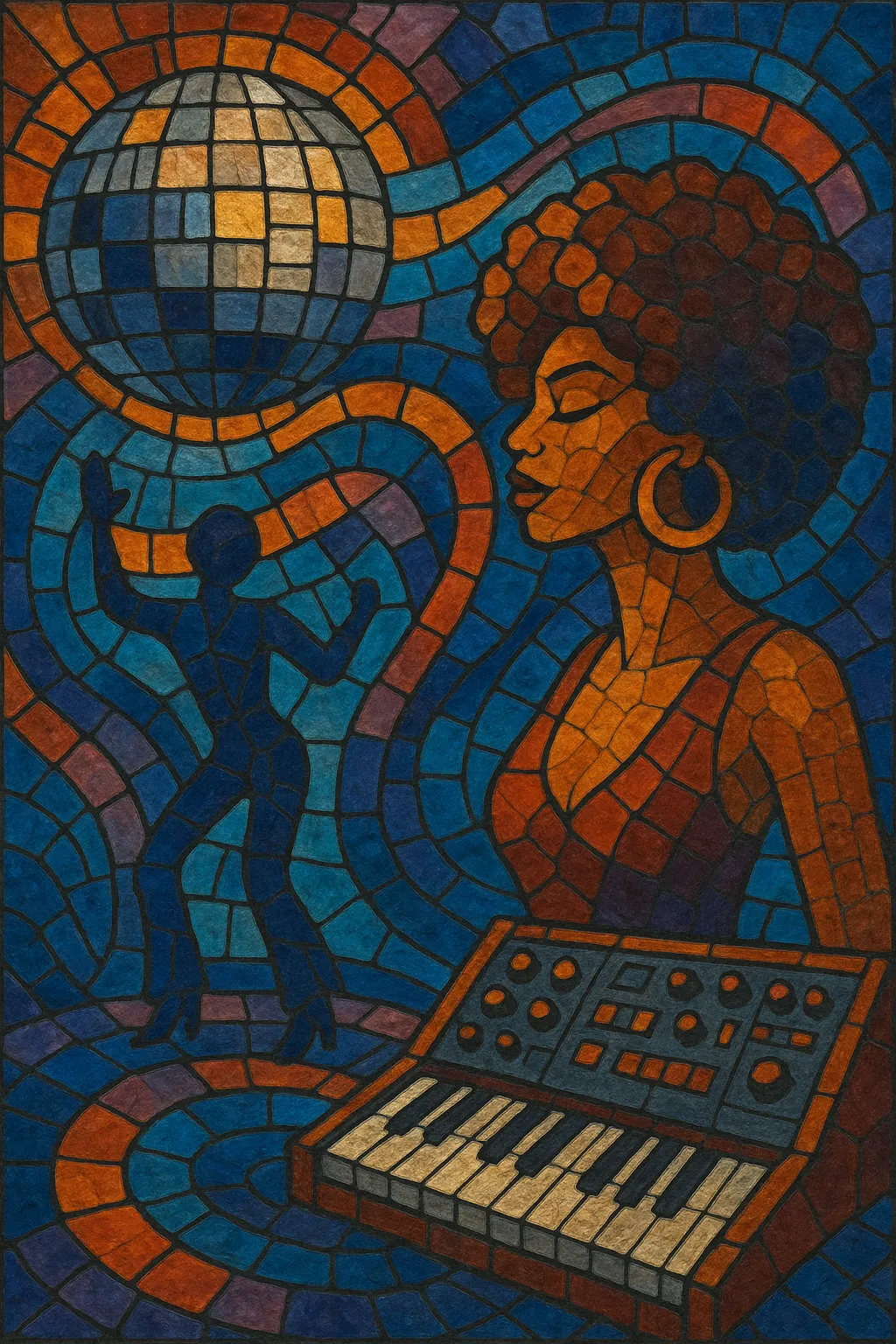Nu disco is a 21st‑century reinterpretation of 1970s/early‑1980s disco, post‑disco, and Italo‑disco aesthetics filtered through modern house production. It favors warm analog timbres, live‑sounding basslines, four‑on‑the‑floor drums, and lush chords, but with contemporary clarity, arrangement discipline, and low‑end weight.
Compared with classic disco or disco house, nu disco typically runs a touch slower and groovier, leans into Balearic and space‑disco atmospheres, and often blends boogie/funk instrumentation with synth‑pop and French‑house sensibilities. It is equally at home on sunset terraces and peak‑time dancefloors, embracing both nostalgia and modern dance utility.
Nu disco emerged in the early 2000s as DJs and producers revisited the musicianship and songwriting of 1970s disco and early 1980s post‑disco/Italo‑disco, updating them with house‑era production. Scandinavian "space disco" (notably from Norway) and European Balearic scenes were crucial incubators, with slower tempos, expansive arrangements, and analog warmth.
Independent labels such as Eskimo Recordings (Belgium), Permanent Vacation (Germany), DFA (USA), and Smalltown Supersound (Norway) helped codify the sound. Artists including Lindstrøm, Prins Thomas, Todd Terje, Metro Area, Aeroplane, Tensnake, and Breakbot fused boogie basslines, Italo arpeggios, and modern mixdowns. The scene also drew on French‑house filtering and American disco editing traditions, bridging crate‑digging culture with new composition.
Through the 2010s, nu disco’s glossy, instrument‑forward style entered mainstream pop and festival sets, influencing dance‑pop and inspiring a broader disco revival. Acts like Purple Disco Machine, Dimitri From Paris, Hercules & Love Affair, and a new wave of edit‑focused producers brought the sound to global clubs and radio.
Today, nu disco spans everything from sun‑kissed, Balearic‑leaning grooves to punchier club versions with heavier low end. Its DNA—four‑on‑the‑floor rhythm, syncopated bass, chic guitar, and analog synths—continues to inform indie dance, indie electronic, and parts of tropical house and future funk.


